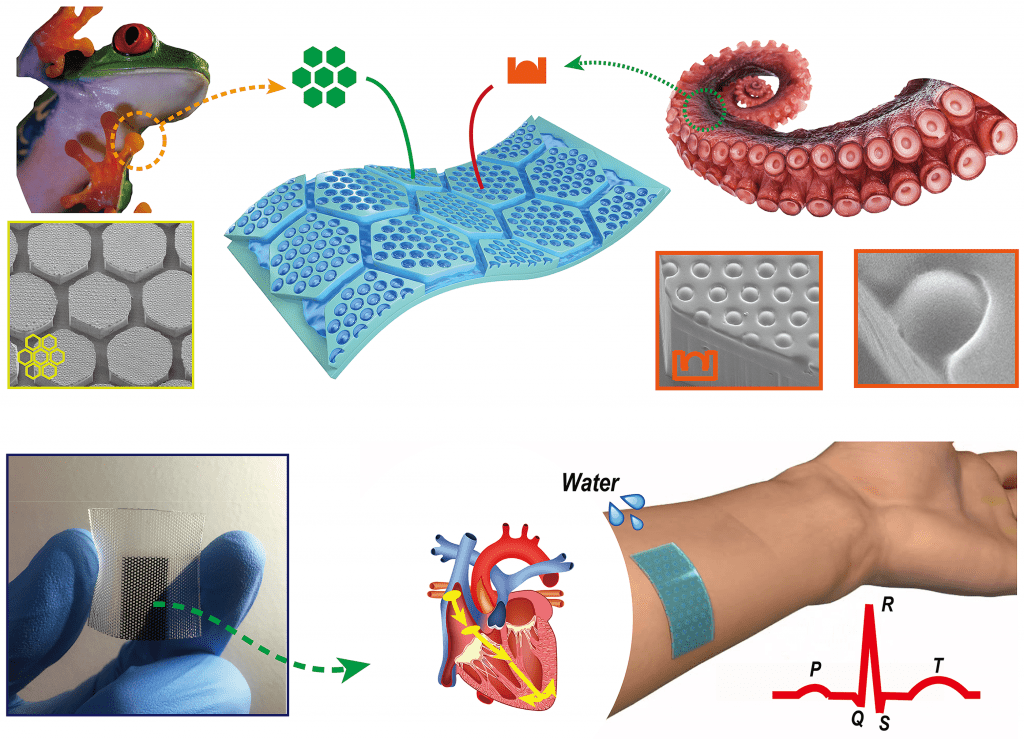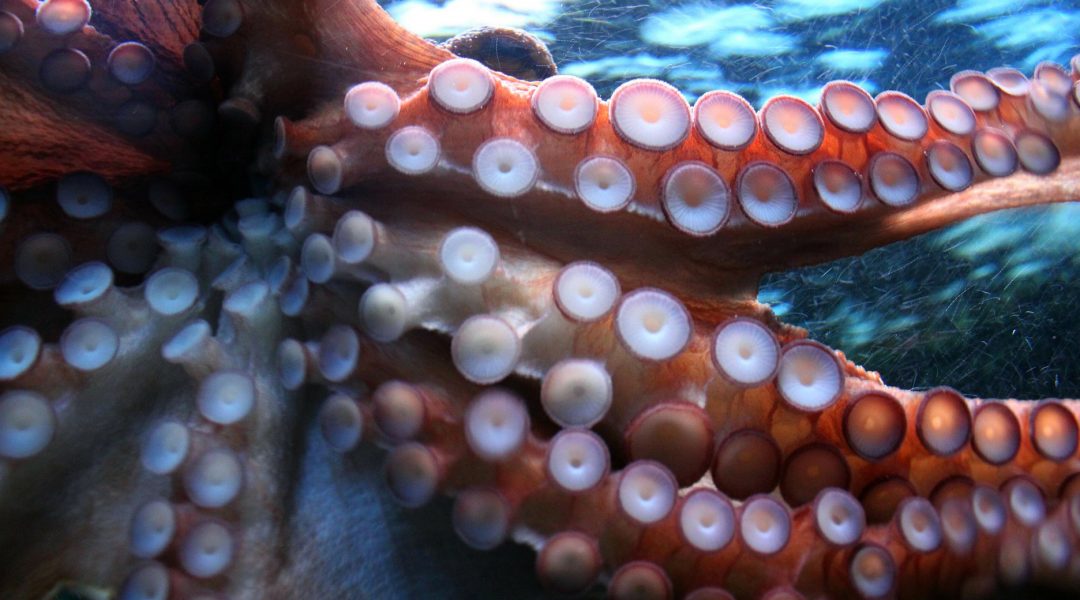The age of smart medical systems is upon us, and wearable technology that can be used in healthcare monitoring has been a growing market over the past few years. Skin adhesive patches have come a long way from its primitive form—the adhesive bandage—and have evolved to be among the most versatile wearable medical tools.
The increasing demand for adhesive skin patches for complex medical purposes such as long-term wound protection and drug delivery would require the patches to be skin-friendly, tolerate moisture, and withstand flowing water. Conventional adhesives composed of chemical moieties are widely used, but have limitations such as non-repeatable adhesion, contamination, and low air/water-permeability, which could cause skin irritation or allergic responses.
To increase adhesion performance on non‐flat skin sections that would secrete sweat, for example, skin adhesives must be able to drain out air and moisture between the patch and the skin, which could minimalize irritation and painful dermal stress for patients with sensitive skin (especially neonatal skin or in cases of atopic dermatitis).
Nature, which has always served as a good resource for technological inspiration, has spurned considerable effort to develop biocompatible or reusable medical adhesives that could be applied to moist surfaces.
Amphibians, like the tree frog, possess the ability to attach themselves to wet and rough surfaces by the use of their contact pads that contain distinct surface patterns such as hexagonal architectures, which enable omnidirectional peel resistance and drainage against wet and rough surfaces, often under flowing water.
Another example of an optimal surface texture for adhesion are octopus suction cups, which allow for reversible adhesion against dry, wet, and rough surfaces.

A team of scientists from Sungkyunkwan University have designed adhesives based on the mechanism underlying the unique multiscale architecture of tree frog toepads for effective omnidirectional adhesion against rough surfaces in various wet conditions.
To further enhance the adhesion capability of the skin patch on wet surfaces, they then incorporated a suction effect yielded by convex cups, inspired by the protuberance structures within octopus suckers.
Several analyses later, what they had was a novel, reversible adhesive skin patch with high air permeability and water drainage. The adhesive patches were then spray coated with reduced graphene oxide nanoplatelets to be used as flexible electrodes for biosignal monitoring without delamination against dynamic wet skins.
The authors believe that this this amphibian- and octopus-like adhesive could replace the conventional adhesives used in skin patches and wearable/implantable devices.
“Our results shed light on the development of in vitro and in vivo integrated medical devices for inner and outer organ applications.” they conclude.

















